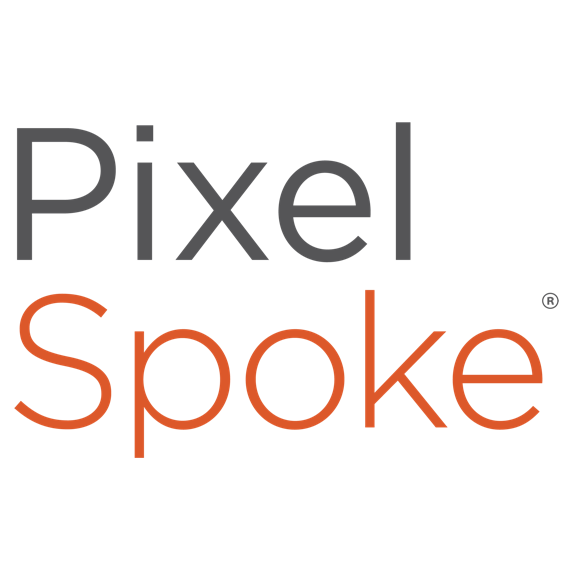Pop quiz: What are the eight cooperative principles?
Hopefully you can name them, but chances are, many of your employees and members can’t. Having visited my fair share of credit union websites, I’ve found that they tend to focus disproportionately on the ways in which they are “just as good” as banks, rather than what sets them apart as cooperative financial institutions.
Let’s not forget that credit unions are founded on the idea that cooperation between people (i.e. “people helping people”) is powerful. When groups come together with a common goal, amazing things can happen. That’s what the cooperative principles are all about, but they often seem to get lost in the shuffle. As part of the team responsible for the public face of a credit union, marketers are in a unique position to bring these core principles to the forefront. Here’s how:
1. Voluntary and open membership + diversity, equity & inclusion
Showcase real members and real member stories.
Credit unions open their doors to people regardless of their race, gender or financial situation. But if you visit most credit union websites, they are filled with contrived stock photos of people who bear little resemblance to the members the credit union actually serves.
Point West Credit Union takes a different approach. By bringing financial empowerment to the underserved, Point West is the epitome of a mission-driven financial institution. If you take a look at their website, likely the first thing you’ll notice is that the photos showcase people from a range of races, ages and backgrounds. Rather than focus on products, they focused on the members—citizens of Point West.
2. Democratic member control + autonomy & independence
Highlight your board of directors and your election/voting process.
Adam Schwartz, founder and principal of The Cooperative Way, said in an episode of The Remarkable Credit Union podcast, “I think that one of the prime advantages [of the cooperative model] is that the owners are the users of the service.” He continued, “I could be a stockholder in Wells Fargo or CitiBank and not be an account holder. I wouldn’t really care what kind of service they provide to their customers.”
These two cooperative principles are about every member having a vote, regardless of their financial situation, and about each credit union maintaining its autonomy as an independent and democratically run organization.
OnPoint Community Credit Union highlights the board voting and application process with a robust Board Elections subsite that outlines what the board and supervisory committee are responsible for, how to apply to serve and how to vote for your preferred candidate. Keesler Federal Credit Union, meanwhile, leads with its board of directors and supervisory committee on its Meet Our Team page, sharing in-depth bios and professional headshots so that members can understand who is representing their interests and guiding the credit union’s strategic direction.
While other credit unions struggle to get many people to show up for their annual member meetings, Blaze Credit Union takes “member meeting” to an entirely different level. They combine their annual meeting with a member appreciation day and pack the agenda with fun and festivities in addition to member business. Recap videos online capture not only the excitement of the day, but also the depth of member investment.
3. Members’ economic participation
Be transparent about where your money goes (and doesn’t go).
Credit unions must improve the economic and social well-being of all members, and unlike banks, excess profit generally gets returned to members in the form of lower rates and fees. New Orleans Firemen’s Federal Credit Union offers this infographic to illustrate how exactly a member’s deposits are leveraged to help other members.
Additionally, most credit credit unions are not directly supporting industries, like fossil fuels, that could be adversely impacting the communities they serve. This is a key, but often overlooked, distinction when it comes to differentiating from the “big banks.”
Clean Energy Credit Union states on its website: “By moving your money to Clean Energy Credit Union, you’re directly supporting the clean energy movement by helping others afford clean energy. Which means every dollar you deposit is offsetting carbon and protecting the environment!” Its offset calculator offers an interactive way for members and prospects to understand the impact of their deposits.
4. Education, training and information
Promote financial wellness over products.
Financial wellness is all too often presented as an afterthought—one link buried in mega-menus full of financial products. Peninsula Credit Union in Washington State bucks this trend by focusing on financial wellness first. Every Peninsula employee is a certified financial counselor, and the credit union presents its financial products as one component of its financial wellness approach, rather than the “holy grail” of financial success. Because let’s face it, a high-interest savings account is nice, but it’s not going to solve all our financial woes.
Interestingly, the attitude shift comes not just in how the financial education is presented to prospects and members, but also in how valuable education efforts are for a credit union’s bottom line. If a credit union views financial wellness programs as “freemium products,” they will be presented and prioritized as such. Shawn Gilfedder, President/CEO of Kitsap Credit Union, framed it this way during an interview on The Remarkable Credit Union podcast: “The comparison I like the most is when you think about Zappos, right? Zappos is a great service company that happens to sell shoes. Our future, and I think the future of many a credit union, is we should be known for promoters of financial wellness that happen to sell retail banking products.”
5. Cooperation among cooperatives
Highlight shared branching and fee-free ATMs.
Shared branching and fee-free ATMs are the best kept secrets in the credit union industry. Prospects often worry about making the switch from their big bank because they fear they will lose the convenience of a robust branch and ATM network.
There’s absolutely no reason to keep this perk a secret. Alliant Credit Union doesn’t beat around the bush when it comes to the messaging on its ATM map: “Search 80,000+ surcharge-free ATMs … That’s more than Chase & Bank of America combined!”
While most credit unions that participate in a shared branching network make some mention of it on their site, many don’t take the time to explain exactly what it means or what a member can do at a different credit union within the network. The whole concept of shared branching contradicts the United States’ fiercely competitive business ethos, and it’s unlikely to be intuitive to your members. Heritage Credit Union devotes an entire page on its website to shared branching, breaking down what it is and enabling members to search for other branches in the network.
However you decide to approach it, make sure your members and prospects are in the know.
6. Concern for community
Lead with your community work, and tell your community’s stories.
Most credit union websites feature at least one “big check photo”—usually in their blog or in a subpage under their “About” section. There’s nothing wrong with big check photos, but donating money to a cause in exchange for a PR opportunity is unlikely to entice modern consumers. While 90% of U.S. consumers say they would switch brands to one associated with a cause, given comparable price and quality, 70% of Americans find companies’ communication about their social responsibility efforts confusing, according to Engage for Good.
While most credit unions emphasize friendly service and competitive rates as their key differentiators, they would likely be better served by more prominently highlighting the depth and breadth of their involvement in the community. Just as photos of real members can help to foster belonging, photos of local landmarks, businesses, institutions, and events can create an immediate sense of connection. Weave community-focused stories and multimedia throughout your site instead of tucked away in a blog category or “About” page.
As a case in point, Pacific Crest Federal Credit Union features both design motifs and imagery that reflect the unique geography of the region it serves, including a 2025 calendar and stories of local businesses.
Our friend Adam Schwartz is not shy about touting the benefits of cooperatives. “Cooperatives are the best business model on earth!” he asserts, and he really means it. If it were up to him, credit union marketers would be shouting these cooperative principles from the rooftops.
If you’re looking for a way forward that doesn’t involve shouting, a website refresh that includes at least a few of the strategies outlined above is a great place to start.








